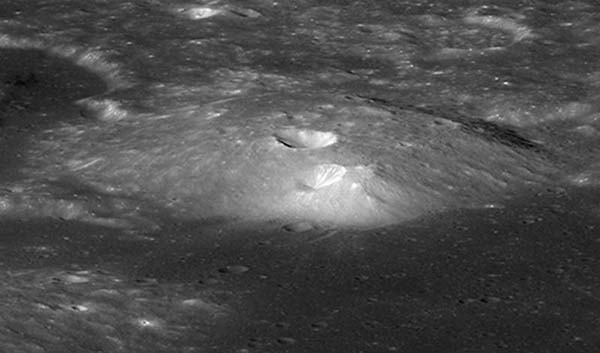

The Earth's Moon doesn't have any big volcanoes and no present volcanic activity, even though new evidence proposes it may still have a partially molten centre. But, the Moon does comprise of many volcanic features for example maria ,the darker patches seen on the moon, rilles and domes.
Venus has a surface that is ninety percent basalt, showing that volcanism played a key part in shaping it's surface. The planet may have had a main global resurfacing event about five hundred million years ago, from what scientists can tell from the density of impact craters on the surface. Lava flows are widespread and forms of volcanism not present on Earth occur as well. Changes in the planet's atmosphere and observations of lightning, have been credited to ongoing volcanic eruptions, although there is no confirmation of whether or not Venus is still volcanically active. However, radar sounding by the Magellan probe unveiled evidence for comparatively recent volcanic activity at Venus's highest volcano Maat Mons, in the form of ash flows near the top and on the northern flank.
There are several extinct volcanoes on Mars, four that are vast shield volcanoes, far bigger than any on Earth. They include Arsia Mons, Ascraeus Mons, Hecates Tholus, Olympus Mons, and Pavonis Mons. These volcanoes have been extinct for millions of years, but the European Mars Express spacecraft has found evidence that volcanic activity may have occurred on Mars in the recent past as well.
Venus has a surface that is ninety percent basalt, showing that volcanism played a key part in shaping it's surface. The planet may have had a main global resurfacing event about five hundred million years ago, from what scientists can tell from the density of impact craters on the surface. Lava flows are widespread and forms of volcanism not present on Earth occur as well. Changes in the planet's atmosphere and observations of lightning, have been credited to ongoing volcanic eruptions, although there is no confirmation of whether or not Venus is still volcanically active. However, radar sounding by the Magellan probe unveiled evidence for comparatively recent volcanic activity at Venus's highest volcano Maat Mons, in the form of ash flows near the top and on the northern flank.
There are several extinct volcanoes on Mars, four that are vast shield volcanoes, far bigger than any on Earth. They include Arsia Mons, Ascraeus Mons, Hecates Tholus, Olympus Mons, and Pavonis Mons. These volcanoes have been extinct for millions of years, but the European Mars Express spacecraft has found evidence that volcanic activity may have occurred on Mars in the recent past as well.
Picture URL:http://www.crystalinks.com/volmoon.jpg
The picture above is an example of a volcano on the moon.
No comments:
Post a Comment